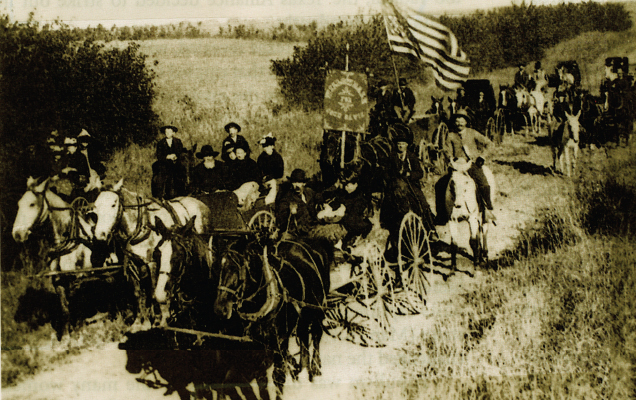The Populist Program
As Democrats took power in Washington, they faced rising pressure from rural voters in the South and West who had organized the Farmers’ Alliance. Savvy politicians responded quickly. Iowa Democrats, for example, took up some of the farmers’ demands, forestalling creation of a separate farmer-labor party in that state. But other politicians listened to Alliance pleas and did nothing. It was a response they came to regret.

Republicans utterly dominated Kansas, a state chock-full of Union veterans and railroad boosters. But politicians there treated the Kansas Farmers’ Alliance with contempt. In 1890, the Kansas Alliance joined with the Knights of Labor to create a People’s Party. They then stunned the nation by capturing four-fifths of the lower house of the Kansas legislature and most of the state’s congressional seats. The victory electrified labor and agrarian radicals nationwide. In July 1892, delegates from these groups met at Omaha, Nebraska, and formally created the national People’s Party. Nominating former Union general and Greenback-Labor leader James B. Weaver for president, the Populists, as they became known, captured a million votes in November and carried four western states (Map 20.2).
In recognizing an “irrepressible conflict between capital and labor,” Populists split from the mainstream parties, calling for stronger government to protect ordinary Americans. “We believe,” declared their Omaha Platform (1892), “that the power of government — in other words, of the people — should be expanded as rapidly and as far as the good sense of an intelligent people and the teachings of experience shall justify, to, the end that oppression, injustice and poverty should eventually cease.” Populists called for public ownership of railroad and telegraph systems, protection of land from monopoly and foreign ownership, a federal income tax on the rich, and a looser monetary policy to help borrowers. Some Populist allies went further to make their point: in New Mexico, the Gorras Blancas, a vigilante group of small-scale Mexican American farmers, protested exploitative railroads and “land grabbers” by intimidating railroad workers and cutting fences on large Anglo farms.

|
To see a longer excerpt of the Omaha Platform, along with other primary sources from this period, see Sources for America’s History. |
Populist leaders represented a grassroots uprising of ordinary farmers, and some won colorful nicknames. After a devastating debate triumph, James H. Davis of Texas became known as “Cyclone.” Mary E. Lease was derided as “Yellin’ Mary Ellen”; her fellow Kansan Jerry Simpson was called “Sockless Jerry” after he ridiculed a wealthy opponent for wearing “fine silk hosiery,” boasting that he himself wore no socks at all. The national press, based in northeastern cities, ridiculed such “hayseed politicians,” but farmers insisted on being taken seriously. In the run-up to one election, a Populist writer encouraged party members to sing these lyrics to the tune of an old gospel hymn:
I once was a tool of oppression,
As green as a sucker could be
And monopolies banded together
To beat a poor hayseed like me. …
But now I’ve roused up a little,
And their greed and corruption I see,
And the ticket we vote next November
Will be made up of hayseeds like me.
Driven by farmers’ votes, the People’s Party had mixed success in attracting other constituencies. Its labor planks won support among Alabama steelworkers and Rocky Mountain miners, but not among many other industrial workers, who stuck with the major parties. Prohibitionist and women’s suffrage leaders attended Populist conventions, hoping their issues would be taken up, but they were disappointed. The legacies of the Civil War also hampered the party. Southern Democrats warned that Populists were really Radical Republicans in disguise, while northeastern Republicans claimed the southern “Pops” were ex-Confederates plotting another round of treason. Amid these heated debates, the political system suddenly confronted an economic crisis.

UNDERSTAND POINTS OF VIEW